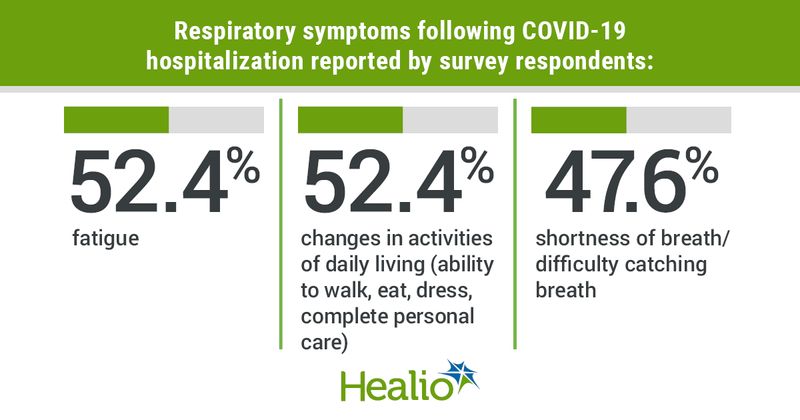Respiratory symptoms persist 6 months after hospitalization for COVID-19: Survey
Click Here to Manage Email Alerts
A survey of patients following hospitalization for COVID-19 revealed residual shortness of breath, fatigue and other changes in daily living activities in the 6 months after discharge.
The most common respiratory symptoms reported after discharge were fatigue (52.4%); changes in activities of daily living, such as the ability to walk, eat, dress and complete personal care, impacted by the ability to breathe (52.4%); shortness of breath or difficulty catching breath (47.6%); and change in smell/taste sensation (42.9%), according to data reported at the virtual American Academy of Allergy, Asthma and Immunology Annual Meeting.

Other respiratory symptoms reported included increased mucus production (38.1%), rhinorrhea (28.6%), nasal congestion (28.6%), cough (26.2%), chest tightness (23.8%), sneezing (19%), wheezing (16.7%) and sinus pain or pressure (11.9%).
These reported symptoms persisted 5 to 6 months after hospital discharge, according to the researchers.
“There is limited information about respiratory symptoms after treatment for the disease after discharge, although we are learning more every day,” Eevar B. Rossavik, DO, resident in the department of pediatrics at Oklahoma State University Center for Health Sciences, said during a presentation of the poster data.
Researchers conducted an ambispective cohort study and telephone survey of 232 patients who were hospitalized with COVID-19 and discharged to home from March to August 2020 at a tertiary center in Tulsa, Oklahoma.
The overall response rate was 18.1% (42 of 232 patients; mean age, 59.2 years).
Continued follow-up to assess persisting symptoms after hospitalization for COVID-19 is important, Rossavik said.
“These findings contribute to the growing body of literature that shapes how these patients are monitored after infection,” Rossavik said.

